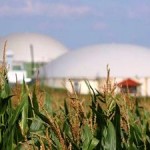
According to the 2009 Greenhouse Gas Bulletin issued by World Meteorological Organization (WMO), total radiative forcing of all long-lived greenhouse gases increased by 27.5% from 1990 to 2009 and by 1.0% from 2008 to 2009, reflecting the rising atmospheric burdens of carbon dioxide, methane and nitrous oxide.
“Greenhouse gas concentrations have reached record levels despite the economic slowdown. They would have been even higher without the international action taken to reduce them,” said WMO Secretary-General Mr. Michel Jarraud. “In addition, potential methane release from northern permafrost, and wetlands, under future climate change is of great concern and is becoming a focus of intensive research and observations.”
Carbon dioxide (CO2) is the single most important anthropogenic greenhouse gas in the atmosphere and contributes 63.5% to the overall global radiative forcing by long-lived greenhouse gases. Global radiative forcing is the balance between radiation coming into the atmosphere and radiation going out. Positive radiative forcing tends to warm the surface of the Earth and negative forcing tends to cool it.
For about 10,000 years before the start of the industrial era in the mid-18th century, atmospheric carbon dioxide remained almost constant at around 280 ppm (ppm=number of molecules of the gas per million molecules of dry air). Since 1750, it has increased by 38%, primarily because of emissions from combustion of fossil fuels, deforestation and changes in land-use. During the past 10 years, it has increased by an average annual 1.88%, according to WMO.
Methane (CH4) contributes 18.1% to the overall global radiative forcing and is the second most important greenhouse gas after carbon dioxide.
Before the start of the industrial era, atmospheric methane was about 700 parts per billion. Since 1750, it has increased 158%, mostly because of increasing emissions from human activities such as cattle-rearing, rice planting, fossil fuel exploitation and landfills. Human activities now account for 60% of methane emissions, with the remaining 40% being from natural sources such as wetlands.
After a period of temporary stabilization from 1999 to 2006, atmospheric methane has risen again from 2007-2009. The Greenhouse Gas Bulletin reports that the likely causes were above average wetland methane emissions due to exceptionally warm temperatures at high northern latitudes in 2007 and heavy precipitation in tropical wetlands in 2007 and 2008. However, it cautions that the reasons for the recent increases are not yet fully understood.
Northern permafrost contains large reservoirs of organic carbon and methane clathrates (a form of water ice that contains a large amount of methane within its crystal structure). Rapid warming and melting of the permafrost, therefore, has the potential to release large quantities of methane into the atmosphere which would contribute further to global warming.
Nitrous oxide (N2O) contributes 6.24% to the overall global radiative forcing. It is emitted into the atmosphere from natural and anthropogenic sources, including the oceans, biomass burning, fertilizer use and various industrial processes. Globally averaged nitrous oxide in 2009 was 19% higher, at 322.5 parts per billion than the pre-industrial era.
Other greenhouse gases: The combined radiative forcing by halocarbons is 12%, nearly double that of nitrous oxide. Some halocarbons such as chlorofluorocarbons (CFCs), previously used as refrigerants, as propellants in spray cans and as solvents, are decreasing slowly as a result of international action to preserve the Earth’s protective ozone layer.
However, concentrations of other gases such as HCFCs and HFCs, which are used to substitute CFCs because they are less damaging to the ozone layer, are increasing rapidly. These two classes of compounds are very potent greenhouse gases and last much longer in the atmosphere than carbon dioxide.
WMO, through its Global Atmosphere Watch (GAW) Programme, coordinates the observations of greenhouse gases in the atmosphere through a network of stations located in more than 50 countries, including high in the Andes and Himalayas. The measurement data are quality controlled, archived and distributed by WMO’s World Data Centre for Greenhouse Gases, hosted by the Japan Meteorological Agency (JMA).
The 2009 Greenhouse Gas Bulletin is the sixth in the series, which began in 2004. The Bulletins report the global consensus of the WMO Global Atmosphere Watch community on the latest changes and atmospheric burdens of the main greenhouse gases.
Click here to read complete 2009 Greenhouse Gas Bulletin:

About WMO
The World Meteorological Organization (WMO) is a specialized agency of the United Nations and the UN system’s authoritative voice on the state and behaviour of the Earth’s atmosphere, its interaction with the oceans, the climate it produces, and the resulting distribution of water resources. WMO has a membership of 189 Member States and Territories (as on 4 December 2009). It originated from the International Meteorological Organization (IMO), which was founded in 1873. Established in 1950, WMO became the specialized agency of the United Nations in 1951 for meteorology (weather and climate), operational hydrology and related geophysical sciences. For more information, visit www.wmo.int.
Source: WMO Press Release dated November 24, 2010.












